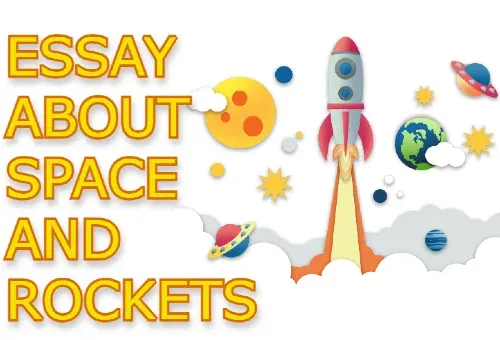Essay about space and rockets
"The ground begins to tremble.
Massive engines roar to life.
Billowing clouds of exhaust.
And then a blinding pillar of fire.
A mighty voyager leaves the Earth behind to explore the vast universe among the stars. "
Launching rockets into space is one of the most important achievements of mankind. Although they come in many different shapes and sizes, all are powered by rocket engines that produce thrust. Space-launched rockets are made up of four major systems, depending on the task.
The structural system forms a frame that holds the rocket together and consists of a cylindrical body, nose cone and wings.
Next, the propulsion system takes up most of the space and includes the rocket engine, fuel, and oxidizer. The payload system depends on each mission and may include a rocket carrying it into space, such as a spacecraft, satellite or human.
Finally, the guidance system is made up of radar and computers that provide stability to the rocket and control the manoeuvres in flight. To launch into space, all four of these rocket systems would have to work together to overcome the force of gravity.
The launch begins when the rocket's propulsion system begins to generate an enormous amount of thrust. Thrust is the force produced by burning fuel as exhaust gases exit the engine.
Once the rocket generates thrust in excess of its own weight, it lifts into the air to begin its powered ascent. During this phase of flight, the rocket's weight will change continuously as the fuel continues to burn.
As a result, most space-bound rockets use a technique called staging to reduce dead weight and increase efficiency. The method involves breaking a large rocket into two or three smaller rockets that collapse at different stages of launch.
As the rocket advances in orbit, its sophisticated guidance system maintains balance and moves forward to keep the flight path on track.
At the correct altitude and speed, the upper stage engine cuts off, completing the rocket's journey into orbit from Earth's surface.
History of rockets
Rockets were used on Earth as early as the 13th century, long before they exploded into space. The first known rocket was introduced by the Chinese in 1232 AD.
These fire arrows were used to fight invading armies and were made by adding firework filled with gunpowder to long arrows.
By the 16th century, the use of rockets for entertainment had spread from Asia to Europe, where they gained popularity in elaborate fireworks displays at ceremonies and festivities.
During the following centuries, the work of scientists such as Isaac Newton and his laws of motion began to greatly increase knowledge in the forces behind rocketry and how to control them.
And by the end of the eighteenth century, military forces around the world began to apply these new scientific understandings to the battlefield, turning previously crude rockets into powerful weapons of war.
However, due to massive technological improvements in rocket science and aeronautics, the true beginning of space rocketry came in the early 20th century.
By the 1950s, the stage was set for the modern space age, and development began on sophisticated launch vehicle systems such as the Atlas rocket family, which launched America's first astronaut into orbit, the Titan rocket, which was instrumental during space travel. Mithun was behind the mission. Race, and the Saturn rocket family, which includes the largest and most powerful rocket ever built, the mighty Saturn 5.
As tall as a 36-story building and weighing over 3,000 tons, this giant was used to launch the Apollo missions to the Moon. -
Conclusion:
Since the beginning of human history, adventurers have looked up at the skies and dreamed of touching the stars. And today, innovations in rocketry are opening up more possibilities for launching astronauts into space than ever before. Whether our vision is of the Moon, Mars or beyond, the future of rocketry and space exploration is only going to be awesome.
THANK YOU SO MUCH

Comments
Post a Comment